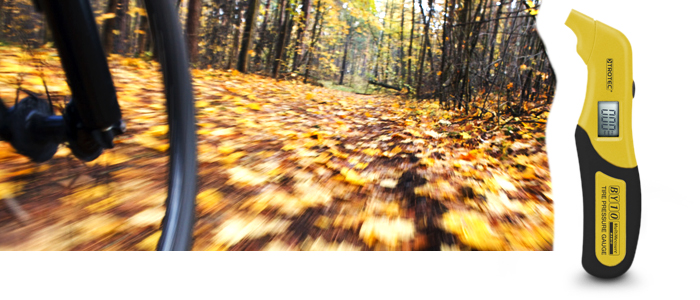
When was the last time you went on a bike tour through one of our many inspiringly picturesque countrysides, along paths that followed scenic stretches of waterways, through hauntingly beautiful forests or woodland, across sprawling commons or down winding, rickety roads and up narrow, twisted tracks as you drank in the wonderful views and scenery in between long, deep breaths of bracing, clean, fresh air?
And when was the last time you checked the pressure of the tyres on your bike?
Cycling has always been an incredibly popular pastime for people of all ages. Which stands to reason really given the amazing variety of bikes that you can buy in the shops and the splendid scenery and breathtaking views which our great British countryside has to offer.
Cycling is good for you. Not only do a few hours’ worth of therapeutic pedalling put you in a different mood and into relax mode, allowing you to leave the worries which rest heavily on all our shoulders – for the time being at least – behind, it also benefits your overall health because it’s good, clean exercise and an excellent way of improving your cardiovascular fitness and toning your muscles while putting as little strain as possible on joints which would not take too kindly to a pounding on a running track.
But it stops being healthy and starts being dangerous when your tyres don’t have the right tyre pressure.
Slippery brake pads, slimy, slowly rotting leaves on autumn roads, road hogging motorists and not wearing a helmet are just some of the factors which can make cycling an unsafe pursuit instead of a truly memorable one. But so is the wrong tyre pressure.
Before you set off with your bike – especially if you’re planning on going on a cycling tour – you really do need to do more than just give your front and back wheel a quick spin on the assumption that this enough to spot any signs of wear and tear, or stiffness and brittleness caused by the sun and extreme temperatures, or any nails, screws or tacks which might have become embedded in the rubber.
In fact, as the tyres of your bike are the only point of contact to the surface of the road or track that you will be travelling along you should – in your interest and in the interest of those who are dear to you – do more than just cast them a casual glance and make a point of checking the condition of your tyres properly to ensure that they have the right pressure.
At the risk of sounding like somebody who knows it all, you should in fact check the pressure of your tyres at very regular intervals.
Up to 80% of all punctures could be avoided if the bicycle’s owner made more of an effort to ensure that his or her trusty bicycle had the right tyre pressure. That’s because underinflated tyres wear out much more quickly than properly inflated tyres and are therefore less well equipped to deal with rough and tough road conditions or prevent shards of glass from puncturing the innertube or tyre. In addition, underinflated tyres also reduce the bike’s – and the rider’s – performance.
It would be wrong to think, however, that with overinflated tyres you are able to achieve exactly the opposite, i.e. enhance the bike’s performance. Tyres that have been pumped up too hard can burst and whoever has had a blowout while hurtling along a busy stretch of road or down a steep hill will know that this is something that they will not want to happen to them again.
So how do you know which tyre pressure is right for your particular tyres? It’s always best to check with a reliable bicycle dealer first or to visit a reliable website. The pressure depends on the type and width of tyre and the load they have to bear.
And then once you know you should always make sure that your tyres have the recommended tyre pressure. The BY10 digital tyre pressure meter from Trotec is ideal for checking the pressure not only of your bicycle tyres, but because it fits on to a Schrader valve also the pressure of your car or motorbike tyres. The compact, ergonomically-designed meter fits snugly into your pocket or the glove compartment of your car and is a must have for each and every pushbike, motorbike or car owner who takes safety seriously – and because there are also adapters available for all sorts of other valves for other vehicle owners too.
Trotec. Because safety comes first.

